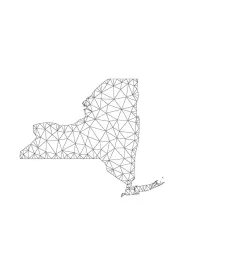-
What Happened: New York State Governor Kathy Hochul signed the “Cumulative Impacts Bill” into law. The law expands existing environmental review procedures under the State Environmental Quality Review Act (SEQRA), the state analog to the National Environmental Policy Act, to require environmental justice (EJ) considerations and cumulative impact assessments for certain agency actions, including permit approvals.
-
Key Takeaways: This law makes New York the second state to inject EJ considerations into environmental permitting decisions, following New Jersey. Going forward, many New York agencies will be required to consider the cumulative impacts of their actions on disadvantaged communities. The passage of this law manifests a growing trend among states of proposing—and enacting—legislation making permit decisions contingent upon EJ implications.
The Fine Print
New York’s “Cumulative Impacts Bill” was signed into law on December 31, 2022, and is set to become effective in late June 2023. The new law injects environmental justice considerations into SEQRA, which requires New York government agencies to examine environmental impacts alongside social and economic impacts for most discretionary agency decisions to approve, fund, or directly undertake an action that may affect the environment. The new legislation does not change the scope of SEQRA, so if SEQRA covered an activity in the past, it is still covered, and if it was exempt, it is still exempt.
Under the Cumulative Impacts Bill, agencies must consider a proposed action’s environmental justice consequences from the outset, starting with determining whether an Environmental Impact Statement (EIS) is necessary under SEQRA. In determining whether an EIS is required, agencies must now consider the action’s potential to “cause or increase disproportionate or inequitable or both disproportionate and inequitable burden on a disadvantaged community that is directly or significantly indirectly affected by such action.”
Where an EIS is required, state agencies must now assess the effects of any proposed action on disadvantaged communities, including whether the action may “cause or increase a disproportionate or inequitable pollution burden on a disadvantaged community.” Agencies are prohibited from approving actions that “may cause or contribute to, either directly or indirectly, a disproportionate or inequitable or both disproportionate and inequitable pollution burden on a disadvantaged community.”
Additionally, when evaluating a permit for any project subject to SEQRA review that may affect a disadvantaged community, the Department of Environmental Conservation (DEC) must now prepare or require an “existing burden report” assessing the community’s existing pollution burdens. DEC must use the results of the existing burden reports to determine whether the project causes or contributes to a disproportionate and/or inequitable burden on a disadvantaged community. DEC must adopt regulations that set forth the requirements of an existing burden report.
The law adopts the Community and Leadership Protection Act’s (CLCPA) definition of “disadvantaged communities,” as those communities “that bear burdens of negative public health effects, environmental pollution, impacts of climate change, and possess certain socioeconomic criteria, or comprise high-concentrations of low- and moderate-income households,” as outlined by the state’s Climate Justice Working Group. The CLCPA requires the Climate Justice Working Group to establish criteria for identifying disadvantaged communities and a list of disadvantaged communities, which it has released in draft form and aims to finalize this spring.
Conclusion
New York’s law follows New Jersey’s 2020 landmark EJ legislation requiring the New Jersey Department of Environmental Protection (NJDEP) to consider the cumulative impacts of certain facilities on overburdened communities when reviewing many types of environmental permit applications. While NJDEP generally must deny permits for facilities that pose disproportionate, cumulative impacts on overburdened communities, New Jersey’s carves out exceptions for facilities that serve an essential environmental, health, or safety function in these communities. New York’s law lacks any such exceptions, making the most aggressive EJ law enacted to date and now the second such legislation to directly incorporate EJ in permitting considerations. Governor Hochul’s approval memo indicates, however, that the New York law may be amended to narrow its scope considerably. New York utilizes “chapter amendments,” which are post-passage negotiations between the legislature and Governor’s office to agree upon changes that will avoid a veto. The Governor contends that, as written, the bill would require significant resources and would lead to widespread confusion among the regulated community and regulators. She agreed to sign the bill based on an agreement with the Legislature to make amendments balancing the need for critical infrastructure with protecting disadvantaged communities. There is no update on when said amendments should be expected, but they have the potential to drastically change the impacts of this law. As with most laws, the devil will be in the regulatory details, so industry stakeholders should stay tuned for forthcoming implementing regulations and comment opportunities.







 />i
/>i
